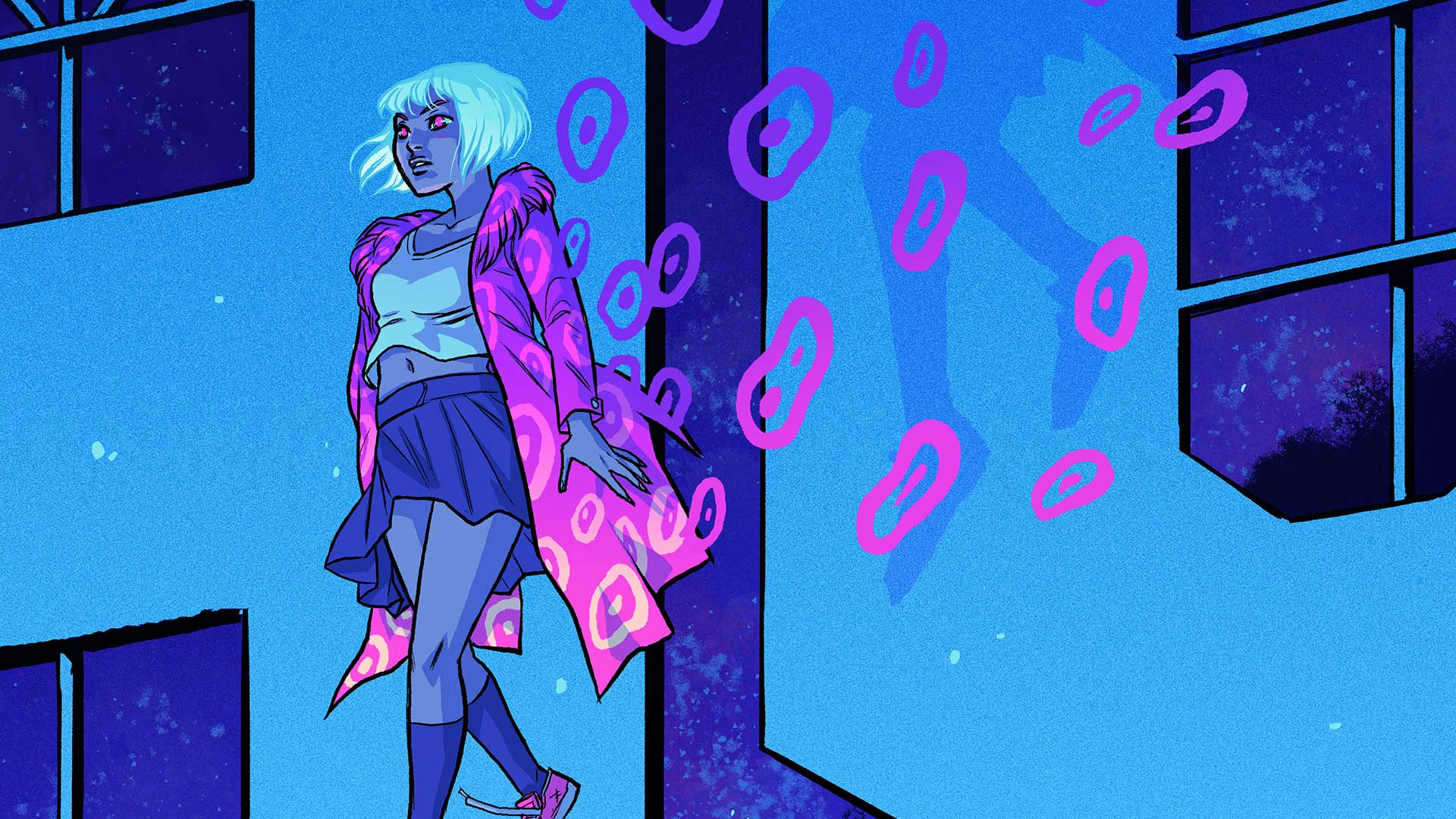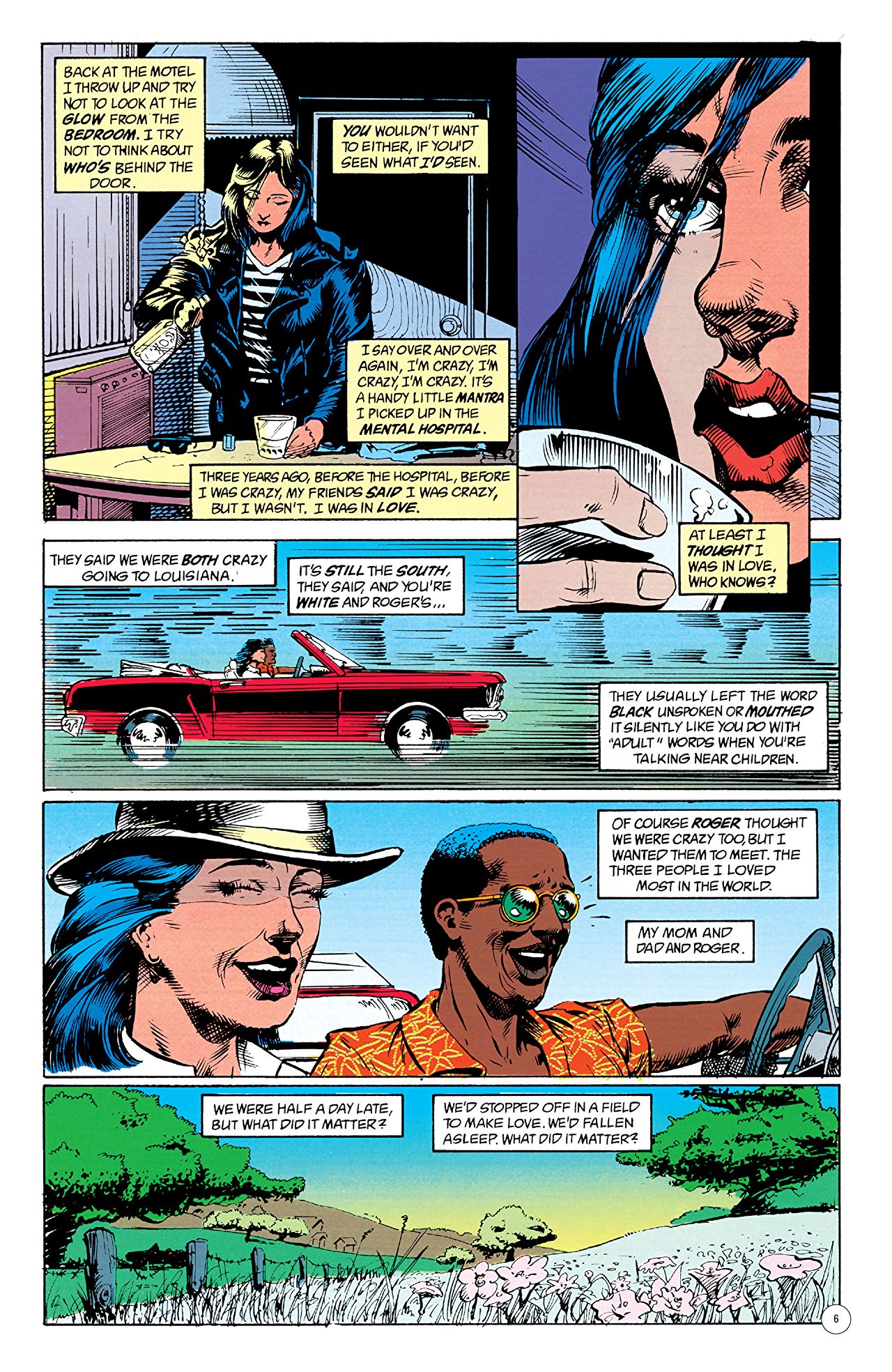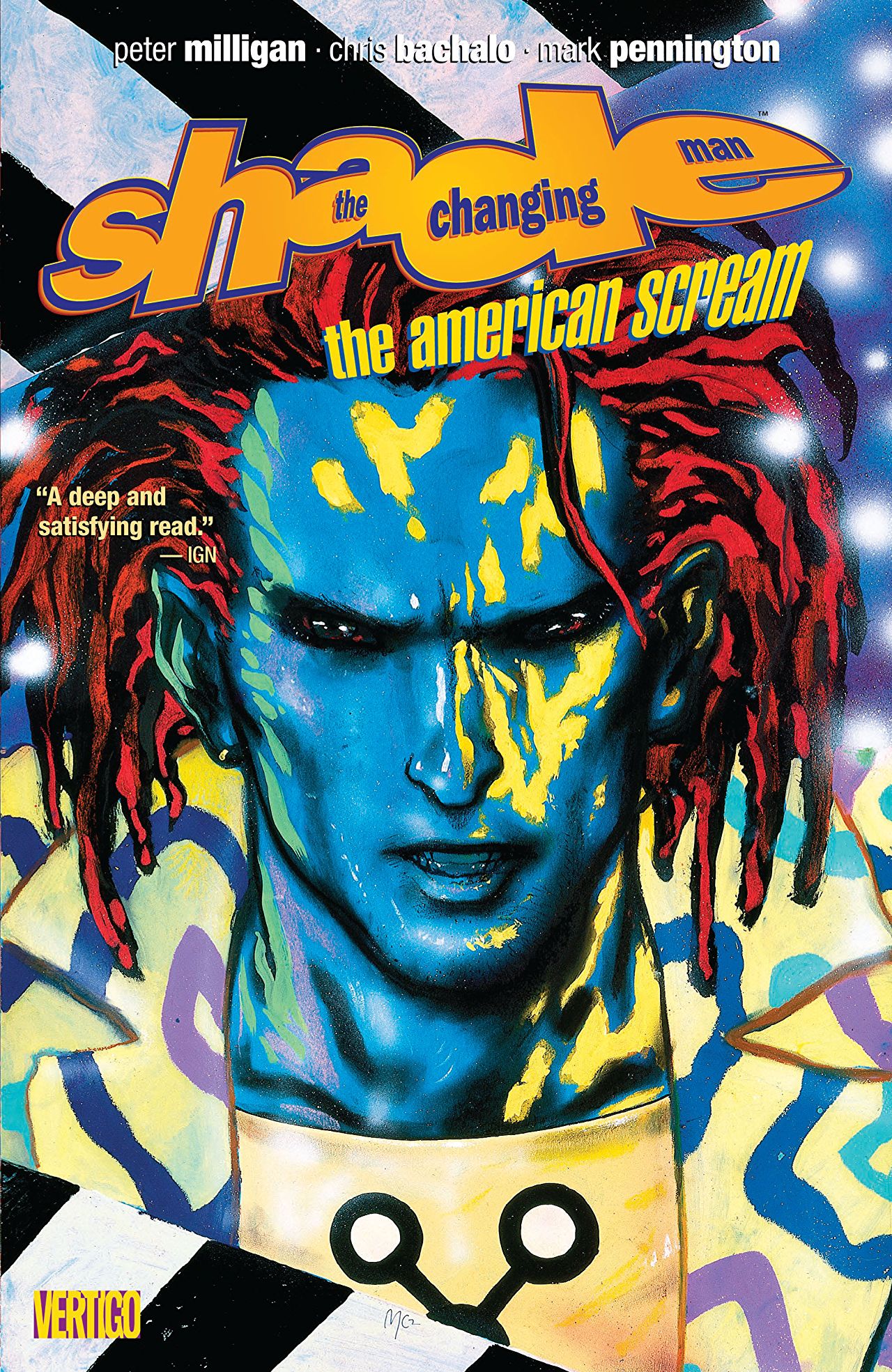Created in 1977 by Steve Ditko, Shade the Changing Man is a character deserving of his name in every respect. Rac Shade, a poet from the Meta-Zone, gains his otherworldly powers from a garment known as the M Vest. The vest may be visually enticing, but it is no technicolor dreamcoat. Better known as The Madness Vest, it’s an alien weapon capable of manipulating the emotions and perception of all those in range to maddening effect. With nearly sentient ambition, the vest’s range expands constantly by feeding on the very sensation it creates: pure madness. Attempts to control the vest, its pull, and its limitless impact are often futile. Luckily, for a creative soul like Rac Shade, futility and insanity are welcome muses.
Shade was re-imagined for a surreal new Vertigo title written by Peter Milligan in 1990 . The Changing Man stood true to Vertigo’s edgy and experimental image by telling an unflinching story of rage, confusion, grief, and empathy framed in the raw anxieties of a society coming to the end of a millennium. Between 2016 and 2018, DC’s Young Animal imprint (curated by My Chemical Romance’s Gerard Way) brought the Madness, and the spirit of Rac Shade, back to Earth in Shade the Changing Girl and Shade the Changing Woman. The Young Animal Shade evolved from the youthful discontent of Millennials and Gen Z with the same emotionally jarring complexities of its predecessor. Even so, lessons taught in the Shade the Changing Man run of nearly three decades ago echo in the world of 2018. As a story grounded in political mistrust, social unrest, and human emotions- Milligan’s Shade the Changing Man: American Scream still has a lot to teach us about navigating madness in an unstable world.

Her name is Kathy George, and everyone she loves is dead. A 23-year-old walking alone to her motel room, bottle of vodka in hand, is not an especially outlandish concept. A 23-year-old walking alone to her motel room praying the vodka will give her the extra push she needs to murder the man waiting for her- that’s not normal (I would hope). Kathy is a young woman filled with grief, anger, hatred, and sadness. She’s an emotional nuclear reactor, which makes her the perfect fuel for the M vest. Her debilitating negative emotions masquerade as apathy, but apathy does not make a perfectly decent person fixate on cold-blooded murder. The events that started Kathy down this path did not come from her own mind or her own moral failings. The terrifying undercurrent of her story lies in that key unsettling truth. Any of us can be Kathy because life is chaos. For all our logic and reason, we can’t predict the twists of the future- twists sparked by the impulses of strangers, twists that can be far more horrific than the worst possibilities we’ve imagined. What would it take to change who you are? What would you have to lose to negate your morals and convictions? For Kathy George, the answer is tragic loss. Not only of her loved ones but of the faith she put in the progress of her country.
Kathy lost everything the weekend she took her boyfriend to meet mom and dad. She expected perhaps an awkward dinner, or at worst that her parents would show remnants of an outdated way of thinking. Kathy’s family is from the deep south. Her new boyfriend, Roger, is black. Kathy is not. She approaches her homecoming nervously, believing her parents won’t have any issue with the relationship. Roger approaches the visit with anxiety and fear. She assures him that this is the modern world. Things have changed. Her parents will accept him after a nice family dinner. Roger agrees to  the trip voicing his concerns with a quiet mantra- “It’s still the south.”
the trip voicing his concerns with a quiet mantra- “It’s still the south.”
What Kathy and Roger could not foresee was that the behavior of her parents would not be the threat to a “nice” visit. By the time Kathy and Roger arrive, her parents are unable to behave in any way- they’re dead.
Kathy comes home to a nightmare. Just beyond her front door, coated in blood and terror, Kathy walks into the middle of her parent’s murder scene. The killer, a man named Troy, is still inside, only stopping his stabbing spree to lunge for Kathy. Luckily, Roger steps in to fight her attacker. As he fights for their lives, Kathy screams for help attracting the attention of a nearby police officer. The cop rushes toward the scuffling men, and for a moment, Kathy believes the ordeal is over. But the startled police officer misjudges the situation.
“It’s still the south.”
Her boyfriend’s statement rings in Kathy’s ears as the officer takes aim and shoots Roger. In a matter of minutes, everyone in Kathy’s life is gone. Kathy knew the weekend could go wrong. She was prepared for potential discomfort, maybe even an argument- but this was madness. She had built her expectations on the foundation that times had changed and things were better, but things went so far beyond arguing the legitimacy of an interracial relationship. Reality took such a violent step in an unanticipated direction that Kathy’s mind fully, and dangerously, snaps.
That day becomes the catalyst for Kathy’s metamorphosis from promising young woman to an unstable and homicidal shell. She embarks on a cross-country journey to find Troy, the man she blames for all three deaths in the brief moments she does not blame herself. Troy, now in prison, is scheduled to be executed the day Kathy arrives in town. The remorseless psychopath panics in his final moments, turning into a terrified child as the electric chair hums to life. It is in this precise moment that Rac Shade arrives on Earth. He is rocketed into the body of the killer- a body vacated of its original owner just seconds before. When the smoke clears, Troy’s body is gone and Shade has arrived.
Kathy, who has been parked outside the prison, intercepts Shade first. Problematically, he’s wearing the body of the man she’s tracked down in grief-stricken insanity. He does his best to explain that he is not Troy, and Kathy agrees to take him with her. How else can she kill the man who took everything from her with her own hand? The deranged escapee is a blessing to a woman slowly going mad. The M vest reveals Kathy’s true loss and trauma, visually personifying the ghosts of her deepest fears. Shade painfully manages to win over the alcoholic and disturbed woman, and together they direct their attention at a threat known as The American Scream.

The vest moves the unlikely pair through a disorienting stream of color and madness, absorbing and adapting to the flow of emotional instability around it. Shade believes America is sick, infected with a widespread and dangerous madness- a madness he unwittingly feeds into by accidentally tapping into the madness stream of JFK conspiracy theories. The vest intercepts emotions and traumas of everyone around it. Shade can use it to his advantage, but there are no guarantees when it comes to controlling actual insanity. The threat Shade perceives is real, and worsened by the day to day interactions of ordinary people. In a strange way, Kathy’s crash course in madness helps her to heal from the past, but in a Joker-like energy, chaotic madness is a danger to us all- all it takes is a little push.
Shade the Changing Man is a stimulating ride through the emotional underside of American culture, seen through the eyes of an alien and his mentally unstable companion. Approaching 30 years since the book’s publication, the story rings true to just how potent mental health is in any society. Lack of empathy, poor coping mechanisms, delusions, and paranoia go far beyond individuals and seep into the public consciousness. While many of us may not have to worry about massive visualizations of our internal struggles, what we think and feel becomes a part of how we observe and interact with our world. Even the briefest contact, the smallest action or reaction, ripples outward. Troy blatantly showed no regard for the repercussions of his actions, but what about the police officer? His poor choice in a moment of panic rippled outward, changing the course of lives. It was a choice shaped by the influence of other moments. Maybe an argument with a friend or bad morning at home threw him off his game. Maybe offhand prejudice comments by friends, neighbors, or coworkers unconsciously informed who he perceived as the threat. Even if his choice was fueled by old southern prejudice, we are not born with an understanding of the world- it is learned. The choices and influence of others moral failings may have built the foundation for his own. What about Roger’s family? What did the ripples of his death set in motion? What could their sorrow and anger do if left unresolved? How will the next generation of his family learn to look at the world in the aftermath? Simply put, what we do matters- every single action, statement, and choice. Ignoring that truth breeds unrest and chaos.
The function of mental health as a force in the Shade comics is fascinating. It’s a personification of the significance we may forget we each possess. Seeing a vivid, evolving, and physical version of an unhealthy society functioning as somewhat of an antagonist drives the point home brilliantly. So what is the lesson that remains as important in 2018 as it was in 1990? Maybe it is to act and react, as imperfect as we are, with an awareness of the monster we feed. Be empathetic, strive to be the best version of yourself- even when it’s hard. Our lives ripple, and without an alien navigator, acknowledging that is the best chance we have of controlling madness.